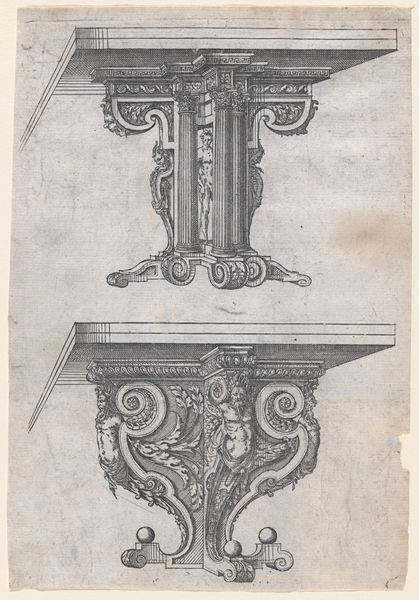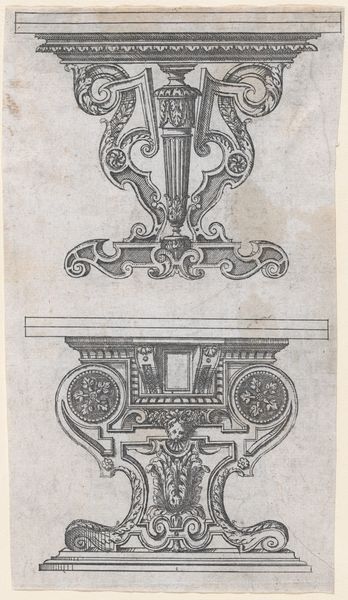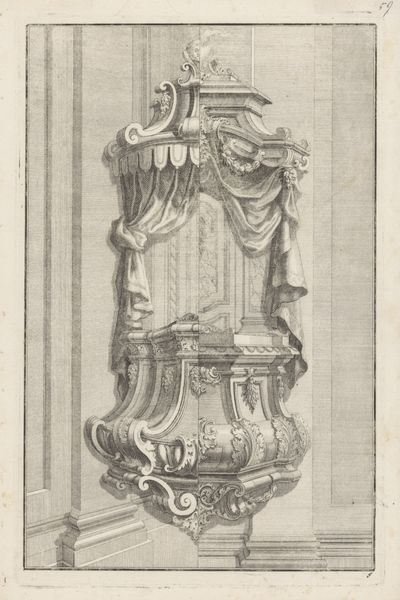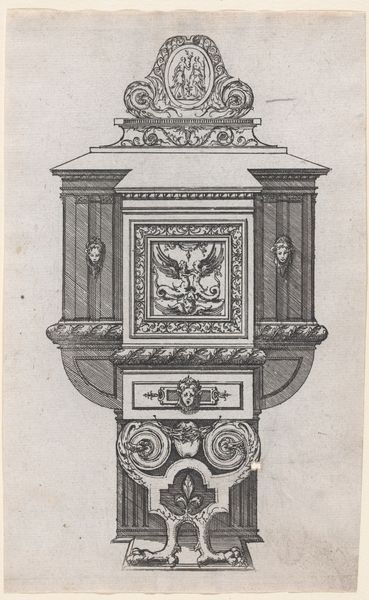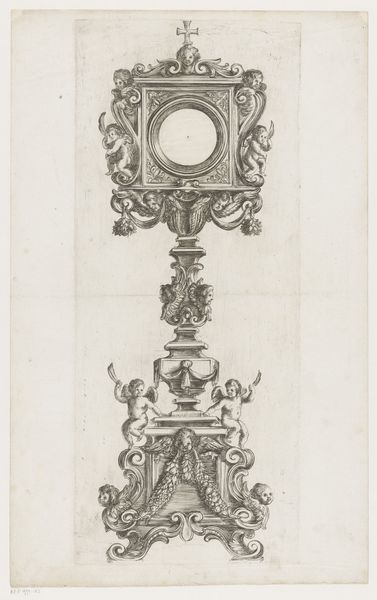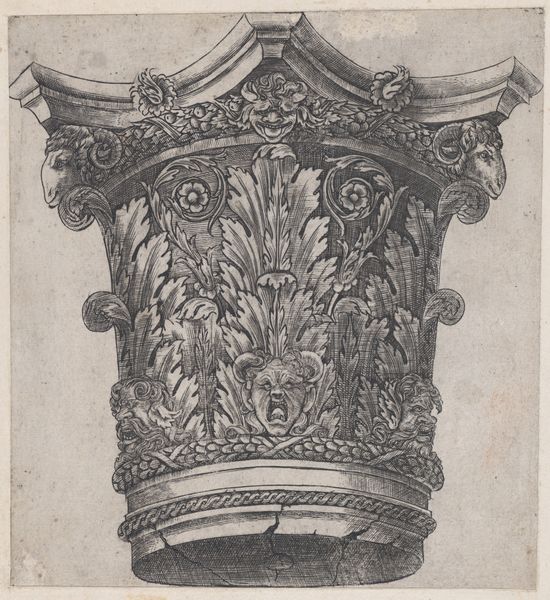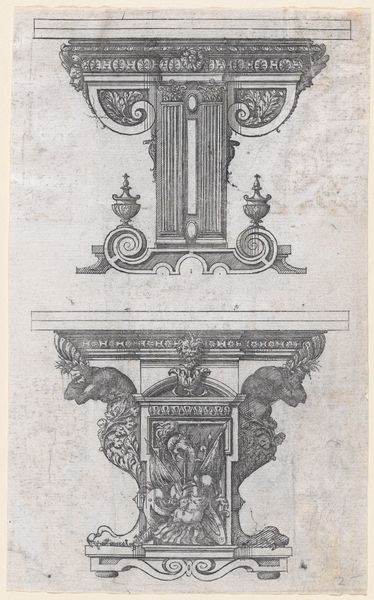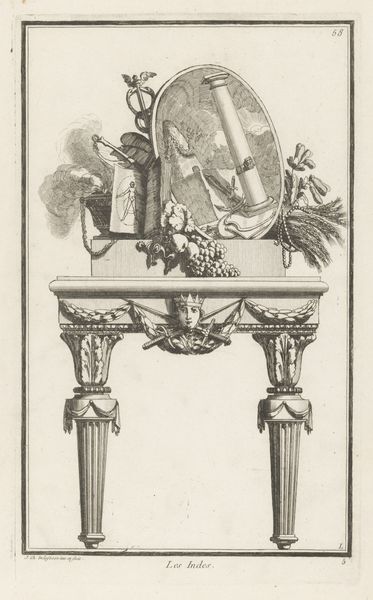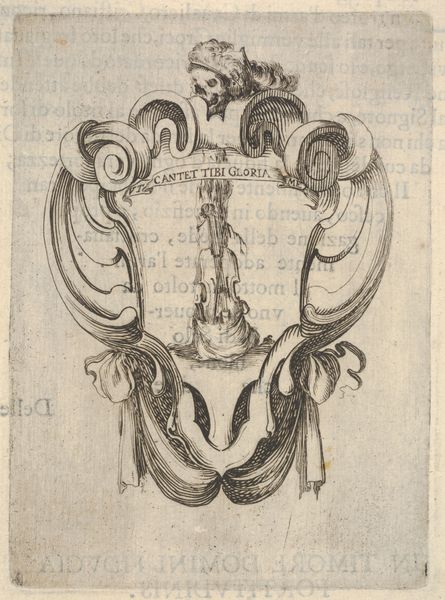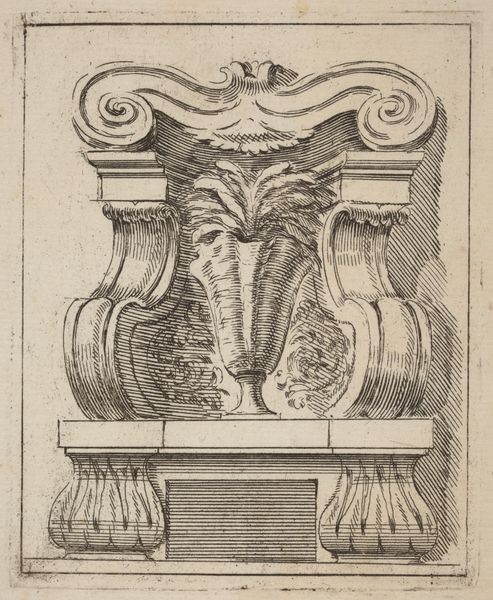
Speculum Romanae Magnificentiae: Capital with peapod volutes and satyr head 1534 - 1540
0:00
0:00
drawing, print, engraving, architecture
#
drawing
# print
#
classical-realism
#
form
#
geometric
#
ancient-mediterranean
#
italian-renaissance
#
engraving
#
architecture
Dimensions: sheet: 6 1/2 x 5 7/8 in. (16.5 x 15 cm) mount: 11 3/4 x 7 13/16 in. (29.8 x 19.8 cm)
Copyright: Public Domain
This is an etching of a capital with peapod volutes and a satyr head, created around 1560 by an artist known only as Monogrammist G.A. & the Caltrop. This print belongs to the Speculum Romanae Magnificentiae, a collection documenting ancient Roman architecture and ornament. It emerged during a period of intense interest in classical antiquity. The publication of prints like these played a crucial role in shaping architectural and artistic tastes of the Renaissance. The grotesque satyr head reflects the era's fascination with classical mythology and its integration into decorative arts. Rome, during this time, was under the influence of powerful families and the papacy, who used art and architecture to project their authority. The meticulous detail of the etching would have served as inspiration for architects and artists, influencing the design of buildings and decorative elements throughout Europe. To fully appreciate this work, one might delve into the archives of Renaissance Rome, studying the architectural treatises and pattern books that shaped its visual culture. Only then can we really understand the role of art in reinforcing social structures, as well as shaping our perception of history.
Comments
No comments
Be the first to comment and join the conversation on the ultimate creative platform.
